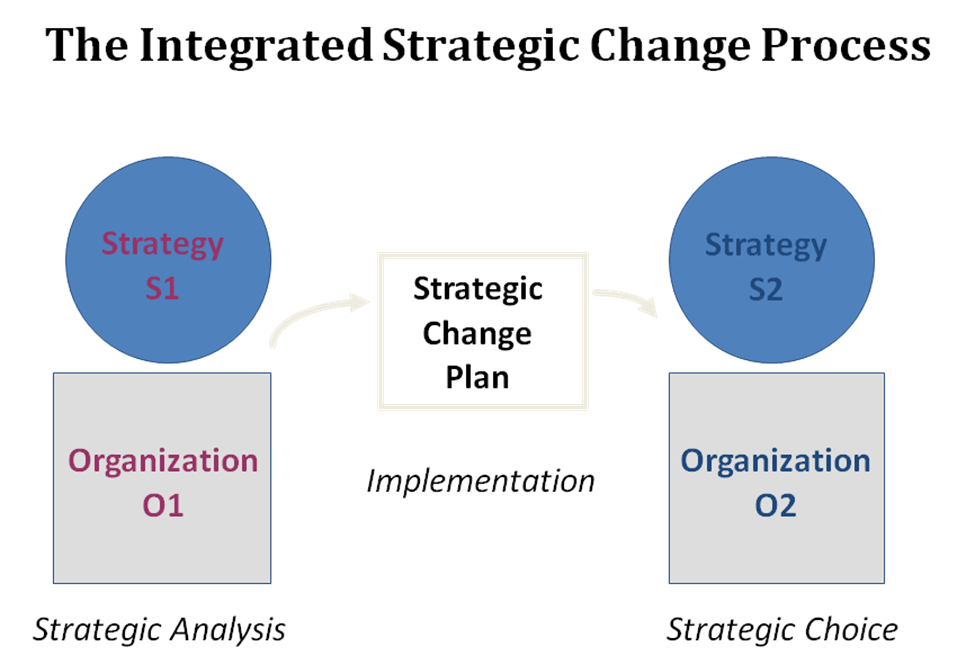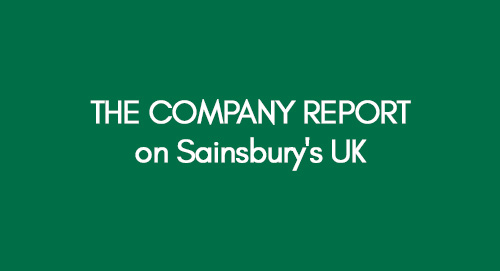
Pitching and Negotiation Skills
January 14, 2021
The Use of BIM in Quantity Surveying Practice
January 14, 2021Introduction
This report is based on Sainsbury's UK, which is the 2nd largest brand in the retail supermarkets' industry of UK (Butler, 2016a). In this report, a new strategic initiative is proposed to implement an organisational change through the adoption of innovation and change management practices for value creation opportunities for Sainsbury's and its key stakeholders.
Need Help with Academic Writing? Get a Response within 24 Hours!
In this regards situational analysis would be performed to find the key challenges and based on which the change management innervations which are required for Sainsbury's to develop shareholder value and competitive advantage are proposed.
1. Situational Analysis
Before proposing an organisational change it is necessary to perform the situation analysis to know the internal and external environment in which the organisation exists (Kotler, 2009). In view of this situational analysis of Sainsbury's was performed based on SWOT and Porter's Five Forces Industry Analysis to establish a comprehensive understanding of current performance, productivity and competitive position, based on which the key challenges faced by Sainsbury's would be identified (Thompson, Peteraf, Gamble, & Strickland, 2013).
1.1. SWOT Analysis
Using SWOT analysis Sainsbury’s internal strengths and weaknesses, as well as external opportunities and threats, have been identified as below;
Strengths
- Have around 16% market share of retail supermarkets industry of UK. (Butler, 2016a)
- The clothing sales were increased by around 8.5% and online sales were increased by around 9%. (Butler, 2016a)
- A wide network of retail stores across the UK, having a large number of convenience stores and supermarkets. (Mintal, 2015)
- Opened 69 new Sainsbury’s local outlets showing a growth in its convenience stores segment. (Butler, 2016a)
- The retailer was boosted by a rising more than 9%
- Competitive prices and fair trade offerings with quality goods and services. (Butler, 2016b)
- Strong brand image as being one of the four big UK’s supermarket chains. (Mintal, 2015)
- Reliable and efficient supply chain due to having a strong relationship with its suppliers, farmers and growers situated within and outside the UK (Mintal, 2015).
- Online sales, loyalty cards and a points system. (Mintal, 2015)
Weakness
- Brand Price Match Strategy(Brand Price Match Promotion such as buy one, get one free) which was opted to be able to compete with the rival retailers who were offering discounted prices to the customers. (Butler, 2016b)
- Inability to attract customers even after reducing prices to be competitive. (Palmer, 2016)
- The profits declined by 14% in response to the reducing prices strategy. (Butler, 2016a)
- Sainsbury’s supermarkets' sales were declined by 1.6%, while annual sales were declined by 1.1% to £25.8bn. (Butler, 2016a)
- Inability to lower prices below a certain extent due to inflationary pressure. (Barber, 2015)
- Uneven distribution of retail outlets and sales throughout the UK, for instance, there are fewer outlets and sales in Scotland. (Mintel, 2015)
- Customer perception of Sainsbury’s product and its perceived value. (Mintel, 2015)
Opportunities
There is an opportunity to;
- Increase its sales growth. (Palmer, 2016)
- Acquisition of Home Retail Group, which is the parent company of Argos, creates an opportunity for Sainsbury’s to grow its customer market share. (Barber, 2015)
- Create high customer value and perception by having fresh and organic products. (Mintel, 2015)
- Capture the growing market of international cuisine products sold in the UK. (Mintel, 2015)
- Expand its business into emerging markets such as China, and other Asian Countries. (Mintel, 2015)
Threats
- Market saturation is evident from declining sales in the retail stores' industry. (Mintel, 2015)
- The economic downturn and post-recession phase due to which it has become difficult for market participants to minimize cost and sustain competition. (Palmer, 2016)
- Increased competition in the retail industry due to the presence of many retailers such as Asda, Tesco, Morrisons, Aldi, Lidl etc. (Mintel, 2015)
1.2. Porter's Five Forces Industry Analysis
Competitive rivalry:
The retail supermarket industry is highly competitive and Sainsbury’s have many existing rivals in the industry namely; Tesco, Asda, Morrison’s, Aldi and Lidl. Supermarkets compete with each other over price, products and promotions (Butler, 2016a). Convenience stores are taking over a large portion of the market with stores such as Co-operative food, Iceland’s and M&S food. Sainsbury's has a market share of around 16% (Butler, 2016b). The price deflation persists in the market due to which there is a huge pressure on retailers to reduce the prices of their products. (Palmer, 2016)
The threat of substitute products and services:
Convenience stores are emerging all over the UK therefore it is becoming highly convenient for people to buy products in all locations making the threat of substitutes even lower. Substitutes could include new technologies such as online shopping although Sainsbury’s already has the biggest online market share as well as the largest retail share. Demand for food is inelastic therefore there is no threat to the product itself. The threat for non-food items (clothing, electronic devices) is fairly high although customers are inclined towards discounted prices therefore Sainsbury’s poses a threat to speciality shops. (Mintel, 2015)
The threat of new entrants:
Capital requirements and start-up costs are very high in the supermarket retail industry. Besides competition and brand recognition acts as a barrier to new entrants. Moreover, the retail industry is in the maturity stage in the UK due to which the industry is saturated and there is less scope for new entrants. Furthermore, the major brands (Tesco, Asda, Morrison’s, Sainsbury’s) owns the majority of the market share in the retail supermarket industry in the UK due to which it would be very difficult to compete for a new entrant in the industry. (Mintel, 2015)
Bargaining power of suppliers:
Suppliers are inclined towards major food and grocery retailers due to the large amounts of business they receive. They dread to lose their business contracts with large supermarkets therefore they are more flexible when it comes to deals and contracts. The switching cost to another supplier is low for the retail supermarkets. (Mintel, 2015)
Bargaining power of buyers:
Switching costs are very low and non-existent for retail supermarket customers. Customers easily switch if there are promotions. Food products are undifferentiated and widely available from other supermarkets retailers. Customers can now easily compare prices with the power of the internet and make sure they are getting the best value for their money. (Mintel, 2015)
Based on Porter’s five forces analysis it was found that Sainsbury’s exists in a very competitive business environment characterized by high competitive rivalry amongst the competing retail supermarkets. There are low threats of substitute products and new entrants in the industry. Moreover, the bargaining power of suppliers is low, while the bargaining power of buyers is high. (Mintel, 2015)
1.3 Summary of the Situational Analysis
Based on situational analysis it was found that even though Sainsbury’s had improved its clothing and online sales performance, however, its supermarkets' sales, annual sales performance in terms of revenue and profitability has declined. The competition in the retail industry is high and there is a huge pressure on retailers to reduce the prices as the price deflation persists in the market. Nevertheless, Sainsbury’s still holds a strong position as the second biggest retailer in the UK.
However, the main challenge which Sainsbury’s faces and which prevent it from achieving its strategic ambitions for shareholder value gains are the intense competition in the retail industry which is forcing the retailers to slash their branded product prices. To be able to remain competitive Sainsbury’s was slashing its prices by adopting a Brand Price Match Strategy, where it was trying to match the prices of its competitors to prevent the customers from going elsewhere. This Brand Price Match Strategy is one of the main reasons which contributed to Sainsbury’s declining sales revenue and profitability.
2. Propose a progressive resolution through the intervention of an agenda of feasible and desirable change to achieve incremental value addition. Assess the impact upon current business practices as well as the organisational learning challenges to be addressed as part of a business transformation agenda.
Based on the situation analysis it was found that reducing sales performance was the key challenge faced by Sainsbury’s and this declining sales revenue performance and profitability was due to the adoption of the ‘Brand Price Match Strategy’ (Butler, 2016). The new strategy was required for Sainsbury's where the old ‘Brand Price Match Strategy’ is to be replaced by ‘Lower Regular Prices Strategy’, where Sainsbury’s would offer on reducing the prices of daily basics products such as bread and cleaning products (Palmer, 2016).
Therefore in this situation strategic intervention is required to achieve the feasible and desirable change focused to realise incremental value addition in terms of improved sales performance. The transformational change intervention is the proposed strategic intervention to achieve incremental value addition of Sainsbury’s (Ayars, 2009).
Following are the certain characteristics of transformational change based on which it was identified that if transformational change intervention can bring a feasible and desirable change to achieve incremental value addition for Sainsbury’s in the present situation. (Harigopal, 2006)
2.1. Characteristics of Transformational Change
- It is induced by internal and external environmental changes.
- It is aimed at developing a competitive advantage.
- It requires a new working model.
- It is led by top management.
- It focuses on systemic and radical change.
- It requires learning and innovation.
(Ayars, 2009)
In the case of Sainsbury's the company was experiencing reducing sales due to inappropriate pricing strategy which was needed to be changed. The situation analysis has highlighted that this change is required in response to the internal and the external environmental change, where the internal profitability of the company was declining, while the company was trying to compete against price discounters in the retail industry.
Moreover, this change was aimed to develop a competitive advantage for Sainsbury’s and it is expected that the new working model would be required to implement the new pricing strategy (Ayars, 2009).
This proposed intervention is focused on systemic and radical change as the new organizational design would be implemented. The analysis of the present situation of Sainsbury’s and the characteristics of transformational change highlights that the change management intervention which was required for Sainsbury's to develop shareholder value and competitive advantage can be achieved by adopting transformational change based on Integrated Strategic Change (ISC). (Harigopal, 2006)
2.2. Integrated Strategic Change
The concept of Integrated Strategic Change has usually defined as the restructuring of an organisational process or marketing plan strategy in order to improve the competitiveness and efficiency of a firm (Worley, 1996). It might lead to gradual changes or even radical systematic changes that comprise shifts in the movement of the firm’s environment in terms of its corporate policies, targeted market, mission and organisation structure. Eventually, this will contribute to bringing a positive effect on the firm’s performance and effectiveness.
Following is the ISC process diagram which indicates how it enables a firm to implement a strategic change plan, as in the case of Sainsbury’s. The process diagram highlights how the old strategy is replaced by the new strategy. (Ayars, 2009)

Figure 1.1 Integrated Strategic Change Process (Ayars, 2009)
The Organisational Design Model (ODM) was employed to implement the integrated strategic change to achieve business transformation change in Sainsbury’s scenario. The conceptual framework of the ODM is based on developing a design fit between the organisational strategy and the organisational design by aligning the organizational elements, as shown in the following diagram. (Ayars, 2009)

Figure 1.2 Organisational Design Model (Ayars, 2009)
There are three application stages to implement ODM, which involves; clarifying the focus of the new design strategy, designing the organisation, and implementing the change. By adopting the ODM for Sainsbury’s a design fit is created in line with the new proposed strategy of ‘lower regular prices strategy’.
The design fit is to be created by developing congruence between the management and information system, work design, structure and human resource practices. Implementing a design fit would require Sainsbury’s to source daily basics products at a lower cost rather than focusing on branded products.
The implementation of the transformational change by employing the Organisational Design Model would enable Sainsbury’s to get rid of its current price match promotion strategy and declining sales revenue and profitability.
2.3 Managing Resistance to Change
When integrated strategic change is implemented in an organisation it replaces the current business practices of an organisation with the new ones. Moreover, while business transformation and change management interventions are introduced it is often encountered by resistance to change and therefore it is essential to manage resistance to change while implementing a new strategy.
John Kotter in his two books ‘The heart of change’ explained what change management is and how it should be managed or implemented. He evaluated and analyzed different approaches and responses of people regarding a change.
According to Kotter every stage of change has some recognized features which people sense, observe and then implement (Wilson, 2008). Kotter suggested eight steps to bring some change successfully which are (1) getting the vision right, (2) building the guiding team, (3) increasing urgency, (4) empowering action, (5) communicating for buying-in, (6) creating short-term wins, (7) Make change stick and (8) Don’t let up (Kotter & Cohen, 2002).
The second step of Kotter eight steps to implement change is to build the guiding coalition by combining a blend of individuals who would manage resistance to change. He stressed that choosing the right blend of individuals having appropriate skills, knowledge and emotions to bring the change is an important aspect (Kotter & Cohen, 2002).
For successfully managing the resistance to change it is important to put together the right people who could lead and motivate employees and develop trust in them regarding the change. Therefore to make a guiding coalition capable of managing the resistance to change it is necessary that it must have individuals who have support from different levels of the organisation so that resistance to change can be countered throughout the organisation (Britain & Learning, 2005).
The guiding coalition should have the right people with the right skills and on whom the employees have trust and they share the same objectives. The guiding coalition must consist of team leaders and managers that will develop new strategies for the firm and thus transform the business (Britain & Learning, 2005). It will contribute towards the productivity of the firm whereby the managers will have top control over the process while the leaders will emphasize the day to day actions planning.
However, According to Barrie (2008), the most efficient way of representing the guiding coalition is through the right composition, level of trust, and shared objective. Therefore while implementing the new strategy by means of guiding coalition it would possible to address the organisational learning challenges such as resistance to change.
3. Against the enduring value propositions for your client’s business to adopt your proposals, using your own judgement, review the wider implications if the client organisation does not accept your proposals.
There could be various negative implications on Sainsbury’s business if it fails to accept the proposed enduring value propositions based on Transformational Change and the Integrated Strategic Change Process. Following are the reasons and the wider negative implications which Sainsbury’s business is subjected to if it does not accept the proposal.
- The existing Brand Price Match Strategyof Sainsbury’s aimed to stay competitive have resulted in declining sales revenues and profitability. It was giving promotional offers such as ‘buy one get one free’ and was slashing prices of brands to stay competitive against the discounters such as Lidl and Aldi. However, this strategy has clearly failed as it had resulted in a sharp decline in profits by 14%. In this situation, it is necessary for Sainsbury’s to leave its ‘Brand Price Match Strategy’ and adopt such an intervention which would enable it to bring transformational change such as adopting a ‘Lower Regular Prices Strategy’. Therefore in view of this if Sainsbury’s does not accept the proposal it is likely to keep on experiencing declining sales revenue and profitability.
- The proposed change management intervention is aimed to develop a competitive advantage for Sainsbury’s due to the fact that in the retail industry of the UK the competitors are focusing more on ‘Brand Price Match Strategy’. In this regard, if Sainsbury’s ignore this proposal then it misses an opportunity to develop a competitive advantage. This would not only result in ignoring the remedy of the present declining sales revenue and profitability but also give the competitors the opportunity to employ the same strategy to take the benefit.
- Moreover failing to implement the suggested strategy would render Sainsbury’s incapable of addressing the internal and external environmental changes, due to which the organisation business, brand image and reputation could also be negatively affected in the long run.
- The proposed intervention focuses to develop a fit between the required strategy and the organisational design. Therefore accepting the proposal would require the modification of the organisational existing design (the management and information system, work design, structure and human resource practices) in line with the required strategy. Therefore if the organisation would try to adapt the required Lower Regular Prices Strategy without developing a fit between the strategy and the organisational design then it is likely to result in ineffective outcomes and the required change would not be implemented appropriately.
- The proposed intervention also addresses the resistance to change management issues and suggests building the guiding coalition team to manage the resistance to change. In view of this implementing the new strategy without accepting the proposal would prevent the company from effectively managing the resistance to change.
In view of the above argument, it is concluded that if Sainsbury’s does not opt for the proposed transformational change management intervention based on the Integrated Strategic Change and Organisational Design Model then it is likely to; incur financial loss, loss of potential competitive advantage development, and fail to address the internal and external environmental changes.
Bibliography
Ayars, P. J. (2009). The Art of Leading Transformational Change. AuthorHouse.
Barber, L. (13 January, 2015). Asda overtaken by Sainsbury's as UK's second largest supermarket but big four continue to slide. http://www.cityam.com/207026/sainsburys-overtakes-asda-become-uks-second-largest-supermarket-big-four-continue-slide
Barrie, D (2008). Change management, Aviation Week and Space Technology (New York), 169(7), 40-41
Britain, E., & Learning, P. (2005). Change Management. Pergamon Flexible Learning, 71-88.
Butler, S. (4 May 2016a). Sainsbury's sales and profits fall amid price cuts. https://www.theguardian.com/business/2016/may/04/sainsburys-sales-and-profits-fall-amid-price-cuts
Butler, S. (7 April, 2016b). Sainsbury's drops price match promotion to focus on cheaper basics. https://www.theguardian.com/business/2016/apr/07/sainsburys-drops-price-match-promotion-to-focus-on-cheaper-basics
Harigopal, K. (2006). Management of Organizational Change: Leveraging Transformation. SAGE Publications.
Kotler, P. (2009). Marketing Management, Pearson Education.
Kotter, J., & Cohen, D. (2002). The heart of change. Harvard Business Press.
Mintel. (2015). Online Grocery Retailing - UK - March 2015. http://store.mintel.com/online-grocery-retailing-uk-march-2015
Palmer, K. (8 June, 2016). Sainsbury's sales fall as 'challenging' market persists. http://www.telegraph.co.uk/business/2016/06/08/sainsburys-sales-fall-after-axing-multi-buy-deals/
Thompson, A., Peteraf, M., Gamble, J., & Strickland, A. J. (2013). Crafting & Executing Strategy: The Quest for Competitive Advantage: Concepts and Cases, McGraw-Hill Education, 17-Jan-2013.
Worley, C. G. (1996). Integrated Strategic Change: How OD Builds Competitive Advantage. Addison-Wesley Publication.
Get 3+ Free Dissertation Topics within 24 hours?


















 Download PDF File
Download PDF File








